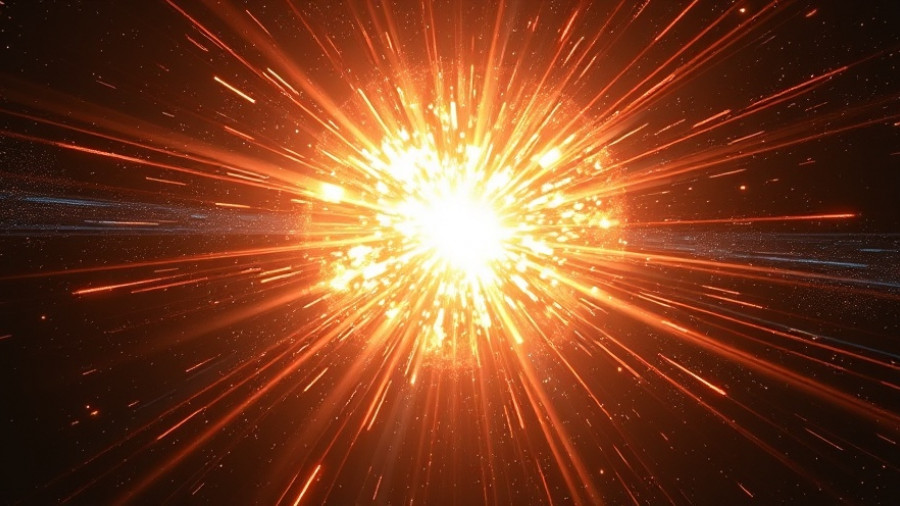
Understanding the Birth of the Universe: A Shift in Perspective
Recent research led by scientists from Spain and Italy has sparked new conversations about our universe's origins. Instead of relying solely on the popular inflation theory that suggests a rapid expansion of the cosmos just after the Big Bang, this new model posits that gravitational waves may be the very catalyst that brought our universe to life. This radical idea harmonizes general relativity and quantum mechanics, proposing a simpler framework that could reshape our understanding of cosmic evolution.
The Role of Gravitational Waves: A Historical Perspective
The concept of gravitational waves has intrigued physicists since the early 20th century, with foundational contributions from Einstein. These waves represent disturbances in spacetime, generated by catastrophic cosmic events like supernovae and black hole merges. For a long time, they were merely theoretical until LIGO’s success in detecting them in 2015. Now, as advancements in observational technology continue, gravitational waves promise to unveil deeper cosmic truths.
Challenging Traditional Models
The traditional inflationary model of the universe relies on multiple adjustable parameters, leading to concerns about its predictability and reliability. In contrast, the new gravitational wave theory offers an elegant, minimalistic alternative that does away with unnecessary complexities.
Raúl Jiménez, a co-author of the study, highlighted, "What makes this proposal exciting is its simplicity and verifiability. We are not adding speculative elements but rather demonstrating that gravity and quantum mechanics may be sufficient to explain how the structure of the cosmos came into being." This simplicity allows for more precise predictions about what scientists can observe in the universe.
Diving Deeper: Quantum Mechanics and Cosmic Structure
The researchers linked their findings to De Sitter space, providing a mathematical foundation for understanding how quantum fluctuations could lead to variations in density, ultimately forming galaxies and planets. Daniele Bertacca, another team member, explained that gravitational waves could create the density differences that have allowed matter to coalesce into the structures we see today.
The Promise of Future Discoveries
As we continue to explore the universe through the lens of gravitational waves, scientists are optimistic about the insights they might provide on the universe's formative years. Kip Thorne, a Nobel laureate known for his work on gravitational waves, asserted that observational astronomy is on the brink of a revolution that could redefine our understanding of the cosmos.
The implications of confirming this new model could extend beyond theoretical physics, influencing how we perceive our universe and our place within it. As two schools of thought emerge—traditional inflationary theory and the emerging gravitational wave theory—scientists urge continued exploration and observation to determine which model aligns best with empirical evidence.
Conclusion: Cosmos Within Us
The exploration of how the universe started is not just a scientific endeavor; it's a deeply human pursuit that mirrors our desire to understand existence itself. As Carl Sagan said, "The cosmos is within us. We are made of star-stuff. We are a way for the universe to know itself." Whether we ultimately embrace gravitational waves as a key to our cosmic heritage or uphold inflation theory, what remains essential is our ongoing curiosity and desire to expand our knowledge.
Understanding the roots of the cosmos is invaluable, particularly for those of us living in such innovative cities like Dallas, a hub for technological advancement and intellectual discourse. Join the conversation and explore more about how scientific explorations can impact lives, shaping our understanding of the universe and ourselves.
 Add Element
Add Element  Add Row
Add Row 



Write A Comment